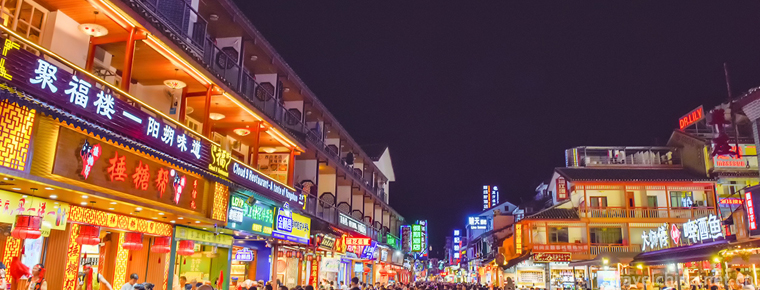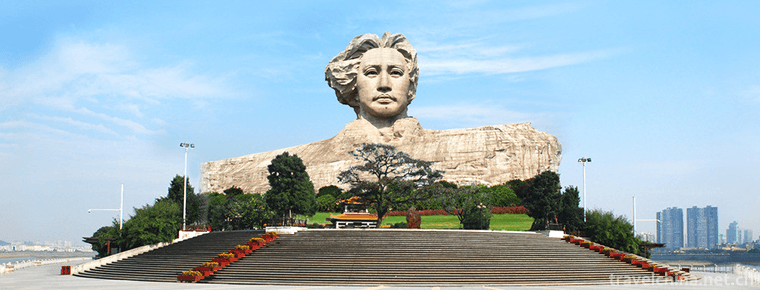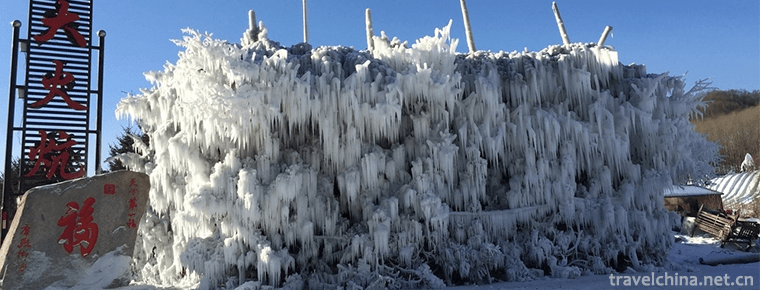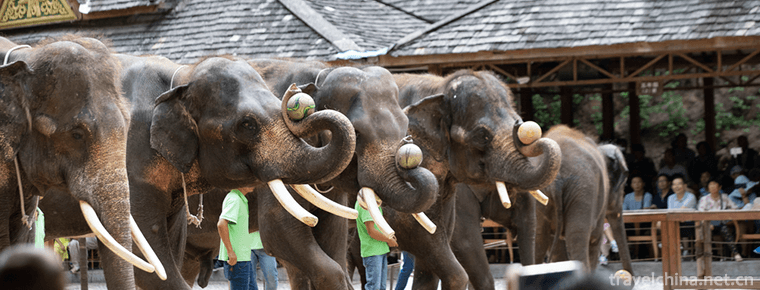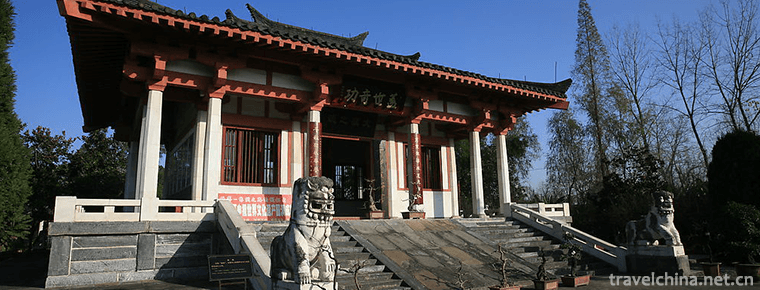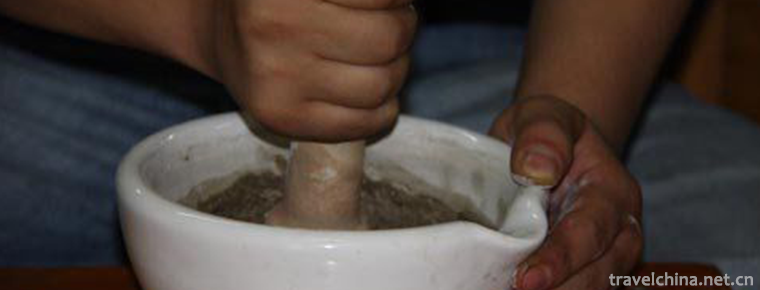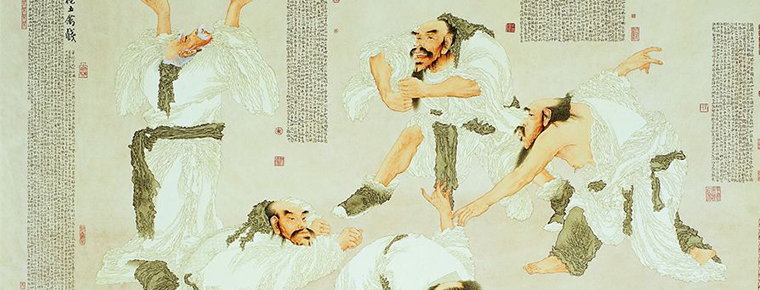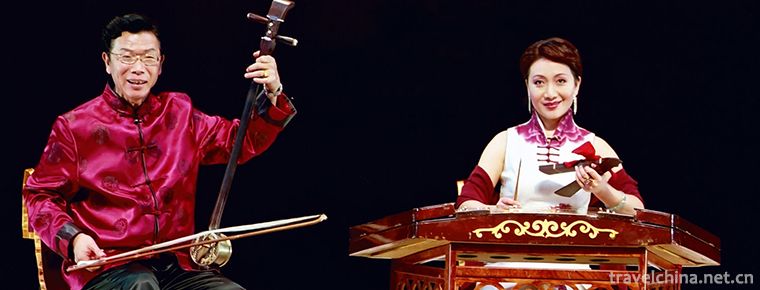Dongyang wood carving
Dongyang wood carving
Dongyang woodcarving, one of the Chinese folk carving arts, is named for its origin in Dongyang, Zhejiang Province. Dongyang woodcarving, together with Qingtian stone carving and Huangyang woodcarving, is known as the "Three Carvings in Zhejiang Province". It is known as the home of Chinese Woodcarving in Dongyang, Zhejiang Province. It has a history of more than a thousand years. There are exquisite Dongyang woodcarving in Beijing Palace Museum, Jiangsu, Hangzhou and Anhui.
Dongyang woodcarving is a kind of carving art mainly based on plane relief. Its multi-level relief, scattered perspective composition and plane decoration have formed its own distinct characteristics. It also retains the natural texture, color and elegance of logs, also known as "white woodcarving" (showing the natural color of wood, different from color painting). Since Tang Dynasty, it has a history of more than a thousand years and is the Chinese people. One of the best folk arts and crafts of the nation is known as the "treasure of the country". On May 20, 2006, Dongyang woodcarving was approved by the State Council and listed in the first batch of national intangible cultural heritage list.
Historical origin
Dongyang woodcarving began in Tang Dynasty and flourished in Ming and Qing Dynasty, and has a high level of craftsmanship since Song Dynasty. According to Kangxi Xinzhi of Dongyang, during the reign of Tang Taihe, Feng Su and Feng Ding, two brothers of Dongyang Fenggaolou Village, were appointed as officials'and ministry's noble books. Their courtyards "high-rise painting column is dazzling, its lower corridor is several and a half mile". Lu's tomb was the same as that of Jinshi and Prime Minister Shuyuan Yu in Tang and Yuan Dynasties in 20th century. At the beginning of the Song Dynasty, there were exquisite carved wooden figurines unearthed with burial. It can be seen that Dongyang woodcarving had developed to a certain extent before Taihe year of the Tang Dynasty. The existing statues of the gifted boy and Guanyin Bodhisattva carved in Jianlong two years of the Song Dynasty are elegant and dignified, sufficiently illustrating the level and style of Dongyang woodcarving at that time.
After the prevalence of woodblock printing in the Ming Dynasty, Dongyang gradually developed into a famous place of production of Woodcarving in the Ming Dynasty. It mainly made decorations of Arhat, Buddha statues and palaces, temples, gardens and houses. By the Qianlong Period of the Qing Dynasty, Dongyang woodcarving was well-known throughout the country. At that time, about 400 skilled craftsmen came to Beijing to repair palaces. Some artists were selected to carve palace lanterns and dragon beds, dragon chairs and cases. Dongyang woodcarving has been widely used in architecture and furniture decoration, forming a complete set of skills and perfect style. There are ancient Ming and Qing buildings such as Luzhai "Suyongtang" and Baitan "Wubentang", Maqiao "Yijing Tang" and "Qiangong Bed", "Shili Red Makeup" and other furniture.
After the Revolution of 1911, Dongyang woodcarving turned to commodity. The handicraft and cabinet furniture made by woodcarving artists were bought by merchants and sold to Hong Kong, the United States, Nanyang and other places, forming a flourishing period of Dongyang woodcarving products. The Renyi Factory opened in Hangzhou in 1914 was the earliest manufacturer of Dongyang woodcarving, and gradually developed to Shanghai, Hong Kong, Singapore and other places. During the War of Resistance Against Japan and the Civil Revolution War. During the period of competition, Dongyang woodcarving once withered, its products were unsalable and its artists were unemployed. After the founding of New China, the Party and the government organized woodcarving artists scattered around the country and established cooperatives. In 1954, Dongyang woodcarving factory was established, and its products were exported to more than 80 countries and regions, such as Europe, America and Southeast Asia. So far, Dongyang woodcarving has developed into more than 3,600 varieties of seven categories, including woodcarving screens. With the development of the times, Dongyang woodcarving has many successful works in the aspects of combining traditional woodcarving techniques, imitating antiquity and creating modern architecture and decoration.
It is said that master Lu Banhua of Tang Dynasty built a hall for Feng Su and Feng Ding brothers. When he was ready to connect the couplets to the beams, he was shocked that 180 Nanmu beams were one foot or two inches short. An old man came to the door and asked for fish for meat. The old man moved two fish tails on two bowls, like two fish heads opposite each other, stretched out a piece, and then used chopsticks to cover the two mouths. Suddenly, the old man realized that he had asked the craftsman to make 360 fish heads and fix them on the stigma. In this way, the beams were connected, and the fish heads were pressed on the pillars, novel and beautiful, and the fish heads and "Yu" The homonym of "head" is very auspicious, and later generations added cow legs to the head of fish, which became the earliest Dongyang woodcarving.
Employment area
Up to now, Dongyang woodcarving has developed to more than 3,600 varieties in seven major categories. "In today's Dongyang, there are more than 140 enterprises engaged in woodcarving production, more than 2,000 family workshops, with an annual output value of more than 2 billion yuan. There are more than 20,000 workers engaged in light woodcarving, and woodcarving has become one of the five pillar industries in Dongyang," said the head of Dongyang Arts and Crafts Association. Today, Dongyang has 1074 craftsmen with professional and technical titles of Arts and crafts, including 15 senior craftsmen. Dongyang wood carvings are also exquisite, such as Wenji Guihan, Huangshan Landscape, Manlu Temple, Sanying Zhanlubu, which are listed in national collections. The "Sakyamuni" carved from 26 tons of camphor wood in Lingyin Hangzhou Lingyin Temple is a national treasure. The Great Buddha Statue and the giant wall hanging in the newly built Leifeng Pagoda, Legend of White Snake, are all fine wood carvings in Dongyang.
Inheritance significance
China is a country that advocates sculpture and is very good at sculpture. Among the hundreds of kinds of folk sculpture crafts with various varieties and schools, Dongyang wood carving in Zhejiang Province, which has been refined for thousands of years, is the most influential and famous one among various schools. It is famous for its long history, rich categories, vivid charm, exquisite carving, exquisite craftsmanship and extensive content of expression. It is the treasure of our nation and a brilliant pearl in Oriental civilization. It contains the wisdom of the Chinese people, integrates the unique temperament and cultural accomplishment of the Chinese nation, and is unique in the history of world folk sculpture.
Since the reform and opening up, Dongyang woodcarving has entered a new era with the development of the times. On the basis of inheriting the fine traditions and unique styles, Dongyang woodcarving has been innovating constantly. It has been modernizing and entering the domestic and foreign markets. In Beijing Great Hall of the People, Diaoyutai State Guest House, the General Empress Hall of the People's Liberation Army, Shanghai Revolutionary History Museum, Hangzhou Outer Building Restaurant, and so on. As well as the sculptures of Dong Gong Restaurant in Singapore and a number of Chinese restaurants in Germany, all of them have won an extraordinary victory and achieved great success. This marks the maturity of Dongyang woodcarving, which is adapted to modern times and expresses modern sculpture skills on the basis of inheriting and developing its characteristics.
However, in the past two decades, great changes have taken place in people's lives. Traditional woodcarving is no longer used to decorate modern buildings. Dongyang woodcarving's skillful and exquisite craftsmanship, ingenious and flexible conception and rich traditional connotation have lost their environment and gradually declined. Modern young people are difficult to concentrate on traditional crafts, so there are inexperienced and popular skills of practitioners. Faced with the endangered Dongyang woodcarving skills, it must be rescued and protected as soon as possible.
The large-scale woodcarving fresco "Legend of White Snake", created for the reconstruction of Leifeng Pagoda in Hangzhou in 2003, is an innovative work of Dongyang woodcarving. While inheriting the tradition, Lu Guangzheng, a master of Chinese arts and crafts, led his disciples to actively explore the modernization and practicality of woodcarving art, and achieved fruitful results. The work is made of the best wood in woodcarving boards. In the design composition of the set of works, the combination of multi-layer focus perspective and scattered point perspective is used to make the main characters more prominent and vivid, and make the background richer and deeper. In the technical method, the round sculpture, semi-circle sculpture, high relief, deep relief and shallow relief are combined into "superimposed sculpture". The state attaches great importance to the protection of intangible cultural heritage. May 2006 On June 5, 2007, the Ministry of Culture confirmed that Lu Guangzheng and Feng Wentu in Dongyang City, Zhejiang Province were the representative successors of the cultural heritage project, and were included in the list of 226 representative successors of the first batch of national intangible cultural heritage projects.
In June 2006, the Zhejiang Provincial Department of Culture awarded the title of "Zhejiang folk artist" to Feng Wentu, Lu Guangzheng, Huang Xiaoming, Wu Chuwei, Xu Jingbin and Yao Zhenghua.
On September 26, 2017, the exhibition of "Sentiment and Wood, Mingzhi and Creativity - Wood Carving Art of Huang Xiaoming" was held in the West Hall of the National Museum of China. The works of this exhibition are divided into classical masterpieces, large landing screen series, wood carving hanging screen series, three-dimensional woodcarving series, wood carving platform screen series, three-dimensional platform screen series, real-scene wood carving series, follow-up form. The carving series includes about 70 works of 8 categories, including the masters of Chinese arts and crafts and the representative inheritor of Dongyang Wood Carving, a national intangible cultural heritage, Huang Xiaoming's masterpiece in the past 40 years. It focuses on the representative works of Huang Xiaoming in different stages. It is a systematic combing of his artistic career and also the beginning of a new starting point of art.
Developing trend
Marketization
Dongyang China Wood Carving City is located in Dongyang, Zhejiang Province, which is the "Capital of Chinese Wood Carving". It is fully invested and constructed by the people's government of Dongyang City. It covers 210 Mu and has a market area of 410,000 square meters.
Since the transformation and upgrading of Dongyang China Wood Carving City in November 2009, the market has become the largest wholesale market of wood crafts and wood carving (mahogany) furniture in China with prosperous trading and strong development momentum. The Professional Committee of wood carving of the Chinese Academy of Arts and Crafts, the quality inspection center of wood carving and mahogany furniture in Zhejiang Province, and the office of geographical certification and trademark use of Dongyang wood carving are all resident in the market.
Dongyang China Wood Carving City brings together thousands of well-known manufacturers, including the "four famous carvings" in China. Its products cover tens of thousands of superior products, such as wood carving, root carving, wood carving (mahogany) furniture, antique doors and windows, bamboo weaving, bamboo craft souvenirs and wood and bamboo craft gifts. The sales network radiates the secondary wholesale markets of provinces, autonomous regions and municipalities directly under the Central Government, as well as Japan and Korea. Southeast Asia and other countries and regions.
In 2010, Dongyang China Wood Carving City deepened its transformation and upgrading, paid close attention to the standardized management and brand promotion of the market, and the market showed a good trend of steady growth. It achieved sales of 6.7 billion yuan, an increase of 117% year on year. It was awarded Vice President of Zhejiang Market Association by the Provincial Market Association successively, and was listed by the National Development and Reform Commission as a support project in the creative gathering area of national handicraft (wood carving, bamboo weaving). It has also been appraised as a national AAAA-level tourist attraction by the National Quality Grading Committee of Tourist Scenic Spots.
Dongyang China Wood Carving City will closely focus on the main line of "promoting development", take advantage of the momentum and comprehensively upgrade, accelerate the construction of "four centers" such as National Master Arts Exchange Center, Handicraft Collection and Auction Center, Wood Crafts and Wood Carving (Rosewood) Furniture Quality Inspection and Appraisal Center, Wood Crafts Price Index Service Center, etc., and plan to start the construction of "four centers" within the year. The second phase of the construction of China Wood Carving City, covering 700 mu, will accommodate such projects as China Wood Carving Museum, Creative Research and Development Center, Market Trade Center, Convention and Exhibition Center, E-commerce Trade Platform and Wood Carving Leisure Square. It will become the first-class cultural market in China and even in the world, with ideas, connotations and culture, integrating tourism, shopping and leisure. Soul of China and even the world's wood crafts products distribution center, export base, R & D center, Exhibition Center and trading center, and become the headquarters of China's wood carving economy!
Address: 188 World Trade Avenue, Dongyang City, Zhejiang Province (on the west side of Dongyang City and on the north side of the World Trade Avenue) (see the top left of the map of Dongyang City or the middle left of the traffic map of Dongyang City)
Main advantages
I. Who Is the Great and Who Is the Struggle?
The first phase of Dongyang China Wood Carving City covers 210 mu, with a market area of 410,000 square meters. More than 3,000 manufacturers from all over the country gather here. Hundreds of thousands of superior products are displayed and sold here. The scale and grade of Dongyang Wood Carving City is so large that the domestic market of the same kind is no better than the right one.
Since the transformation and upgrading of Dongyang China Wood Carving City in November 2009, the market transaction has been prosperous, the momentum of development is rapid, and the transformation and upgrading has been successfully realized. In 2010, the turnover of the market reached 6.7 billion yuan, and it has become the largest wholesale market of wood crafts and wood carving (mahogany) furniture in China.
2. Location and transportation are advantageous
Dongyang China Wood Carving City is located in the Yangtze River Delta Economic Zone, where China's economy is the most developed. It can capture the latest information of industry development and insight into the trend of industry development. At the same time, the strong local consumer demand in the Yangtze River Delta region will also promote the rapid development of Dongyang China Wood Carving City!
Dongyang China Wood Carving City is adjacent to the famous Yiwu China Commodity City. It is only 6 minutes'drive from Yiwu International Trade City. The transportation is very convenient. Passenger logistics can quickly integrate into Ningjin Expressway (G1512), Zhuyong Expressway (S26), Shanghai-Kunming Expressway (G60, former Hangzhou-Jinqu Expressway) and Zhejiang-Jiangxi Railway Expressway Network.
Third, unprecedented publicity and promotion efforts
Since its opening, the market has always attached great importance to the promotion and brand building of the market. Every year, it invests huge amounts of money in advertising and publicity of the market.
Especially since the transformation and upgrading to Dongyang China Wood Carving City in November 2009, the marketing promotion has been further strengthened. Partnerships have been established successively with powerful media such as CCTV, Phoenix Satellite TV, Zhejiang Satellite TV, Qianjiang Evening News and Chinese Wood Carving. Strong advertising public relations and solid media propaganda have effectively promoted the popularity of Dongyang China Wood Carving City and expanded its marketing. Sales channels ensure the stability, development and prosperity of the market.
IV. Admission of Masters Cluster Association
More than 70 masters of Arts and crafts at or above the provincial level have been stationed in Dongyang China Wood Carving City and set up a master's boutique area in the market. Dongyang China Wood Carving City has become the most specialized market for arts and crafts.
The Professional Committee of Wood Carving of the Chinese Academy of Arts and Crafts is the highest professional committee of wood carving industry in China. The committee holds annual general meeting and regularly holds the "China Wood Carving Creation Grand Prix" in Dongyang China Wood Carving City. The presence of craftsmen and trade associations greatly improves the market level and the influence and appeal of the industry.
Fifth, a gathering of businessmen and businessmen
The "China Wood Carving and Bamboo Knitting Arts and Crafts Fair" sponsored by Dongyang China Wood Carving City has been held for five consecutive sessions. With its large scale, high grade, large number of visitors and increasing influence year by year, it has become the largest event in the domestic wood crafts and wood carving (mahogany) furniture industry.
From October to November each year, manufacturers from 18 main wood carving producing areas, such as Yunnan, Hainan, Guangdong, Guangxi, Fujian, Jiangxi, Sichuan, Shanghai, Beijing, Jiangsu and Zhejiang, gather in Dongyang with hundreds of thousands of wood carving products, and work with wholesalers and retailers from all parts of the country and Southeast Asia to inherit wood carving art and exchange trade. In October 2010, the fifth session of China (Dongyang) was held. ) Wood carving bamboo weaving arts and crafts exposition highlights, unprecedented grandeur, all data set a record high, turnover of the same type of exhibition the most!

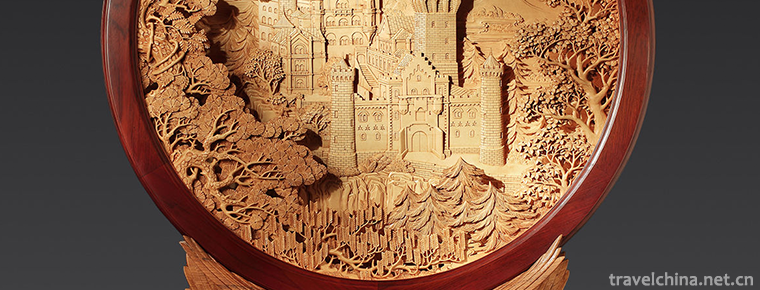
-
yangshuo west street
West Street is nicknamed Foreigner's Street, located in Yangshuo County,.
Views: 139 Time 2018-10-12 -
Yuelu Mountain and Orange Prefecture Tourist Area
Orange Island Scenic Area is located in the heart of the Xiangjiang River opposite Changsha City, Hunan Province. It is the largest famous island in the Xiangjiang River with an area of 91.4 hectares.
Views: 184 Time 2018-12-12 -
Yabuli Ski Resort
Yabuli Skiing Resort is a national AAAA-level scenic spot, located 20 kilometers southeast of Yabuli Town, Shangzhi City, Harbin City, Heilongjiang Province, 240 kilometers away from Harbin City.
Views: 184 Time 2018-12-22 -
Tianma Island Tourist Area
Shandong Tianma Island Tourist Area is composed of Ma Qi Mountain and Tianhu Lake. It is located 16 kilometers northeast of Junnan County Town, Linyi City..
Views: 340 Time 2019-02-21 -
Wild Elephant Valley in Xishuangbanna
The Wild Elephant Valley in Xishuangbanna is located in Mengzi Nature Reserve and "UNESCO Man and Biosphere Reserve" of Xishuangbanna National Nature Reserve.
Views: 130 Time 2019-02-25 -
Tomb of Zhang Qian
Zhang Qian's tomb was the tomb of Zhang Qian, an outstanding diplomat, explorer and pioneer of the Silk Road in the Western Han Dynasty. In the third year of Emperor Yuanding of Han Dynasty (114 years.
Views: 242 Time 2019-03-16 -
Production Techniques of Tibetan Mineral Plant Pigments
Since the emergence of human beings, mineral pigments have been accompanied by human beings. Mineral pigments were first used to draw murals.
Views: 205 Time 2019-04-09 -
Huatuo Wuqin Opera
Huatuo Wuqin Opera is a set of guiding techniques compiled by Huatuo, a famous physician in the late Eastern Han Dynasty, according to the principles of traditional Chinese medicine,.
Views: 94 Time 2019-05-04 -
Yazhou Folk Songs
Yazhou folk song is one of the ancient folk songs in Hainan Province. It is popular in the areas of Yazhou and Dongfangkangcheng, west of Sanya Yacheng and east coast of Ledong. Yazhou Guest (Han) dia.
Views: 184 Time 2019-07-10 -
Yao an Bazi Cavity
On June 7, 2008, Yao'an Baziqiang, declared by Yao'an County, Yunnan Province, was listed in the second batch of national intangible cultural heritage list with the approval of the State Council. Heri.
Views: 312 Time 2019-07-11 -
Yicheng Qinshu
Yicheng Qinshu is called "Qinshu" because its main accompaniment instrument is Yangqin. Yicheng Qinshu is an ancient traditional folk art. Legend has it that it originated in the late Yuan D.
Views: 282 Time 2019-07-13 -
Fobao scenic spot
Fobao scenic spot, located 128 kilometers southeast of Sichuan Province, is located in the southern edge of Sichuan Basin. It is a primeval forest area at the tail of the North vein of Dalou mountain. It covers an area of 380 square kilometers. It has the characteristics of mountain, water, stone and forest. It is a subtropical humid climate with superior natural conditions and well preserved vegetation..
Views: 172 Time 2020-10-16
